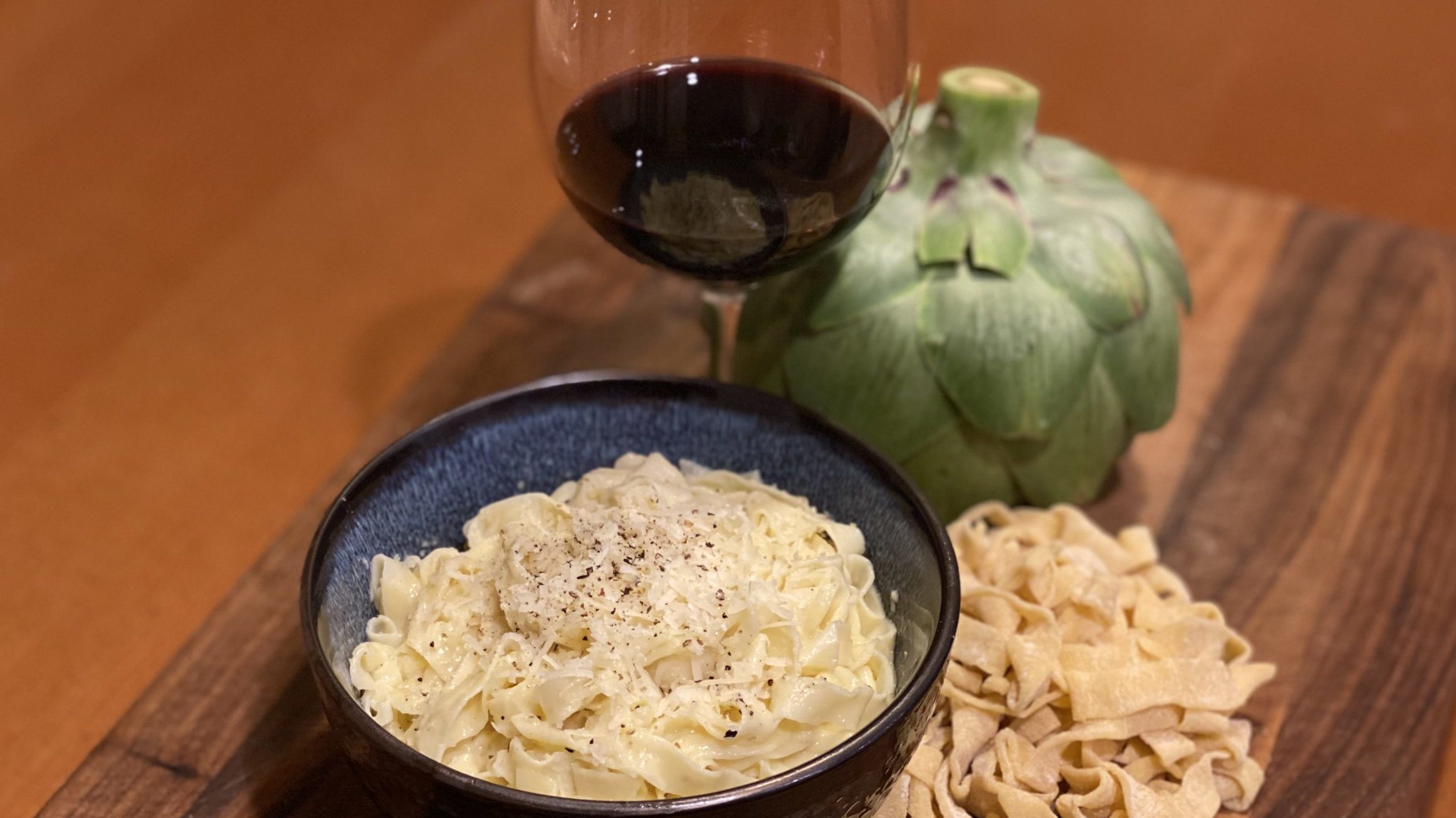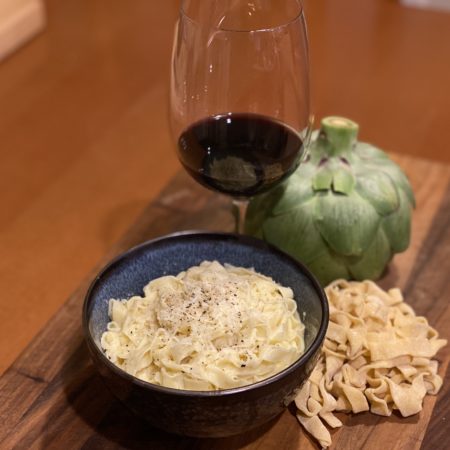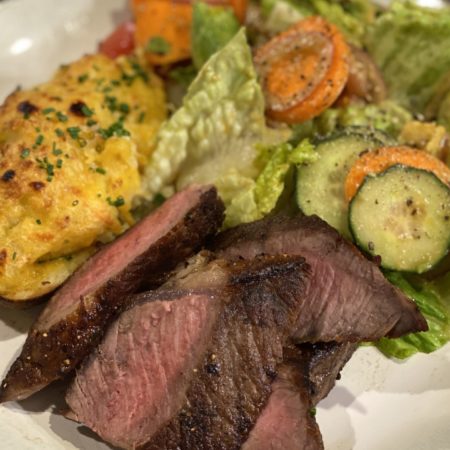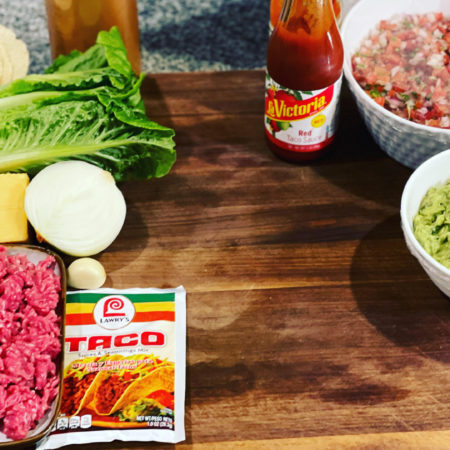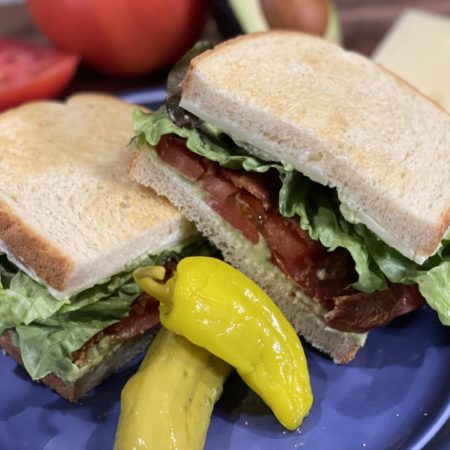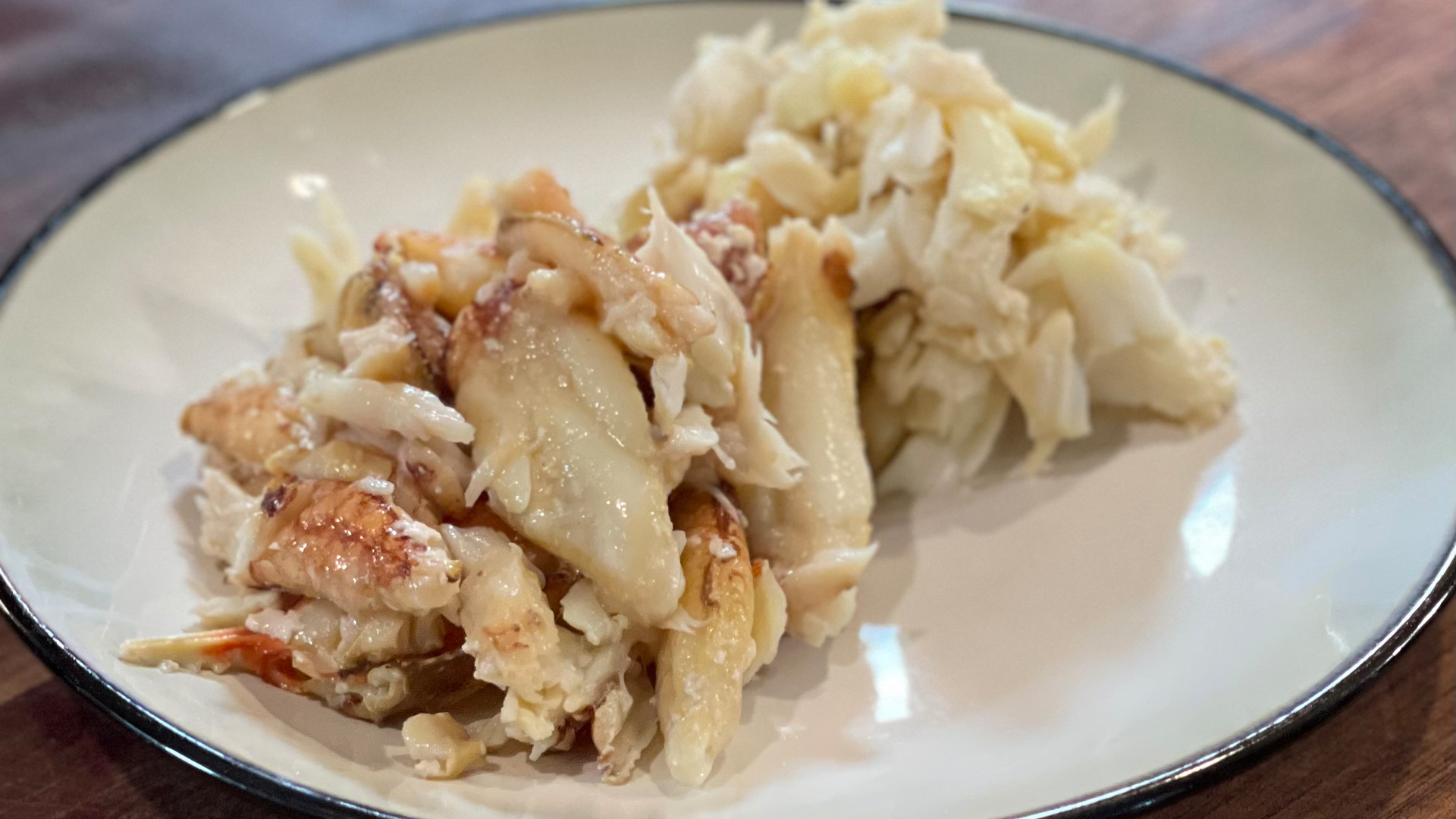I love fresh pasta.
Don’t get me wrong… the bite that comes from dry pasta has its own charm as well. They both suit different meals.
Fresh pasta is best for light dishes as the texture is very fluffy, almost like you are eating a cloud. A cloud covered with delicious creamy sauce like an alfredo sauce. Dry pasta is better when you want a hearty meal, like spaghetti with a rich meaty Bolognese sauce. I love both of them.
Today I’m focusing on the fresh kind though, and I’ve found that a lot of people are very intimidated at the thought of making their own pasta at home! I think the hesitance comes from a misunderstanding in how easy it actually is to make. Most of the time spent on fresh pasta is actually waiting for the dough to rest in the fridge: you need to wait at least an hour. It actually does well if you let it go a little longer too.
So what would it look like if you made the dough in the morning or over lunch break, and let it rest until dinner time? Then it’s a quick 15 minutes to roll it out, cook it quickly in a salted pot of boiling water, and make a deliciously light and creamy alfredo sauce.
Speaking of which – I’ve used the word “creamy” to describe alfredo sauce twice in this article. Did you know that traditionally it actually contains zero cream? And yet what we buy pre-jarred in the stores is thick and goopy and … ultimately kind of gross. It’s sad, really, although it is true what they say: you really can’t bottle magic.
Fresh alfredo sauce uses the starch in pasta water and the fat from butter to emulsify with the cheese that melts into it and through that magic creates a homogenous sauce that seems incredibly creamy yet is surprisingly light. And it is absolutely best eaten fresh otherwise it tends to break down and separate fairly quickly.
In the Cook Along Live video I made fresh pasta two ways: with a rolling pin on the cheap, and with a pasta roller if you have one or are willing to invest a little bit of money into some kitchen gear. If you really wanted to be a pro about it, you could get a mattarello (an extremely long rolling pin that traditional pasta makers in Italy use) and go full traditional; however, I spare you that much geekery in this episode.
No promises for future episodes though. ????
Fresh Fettuccine Alfredo
Equipment
- Rolling Pin
- Pasta Roller optional
- Cheese Grater
- Whisk
Ingredients
Pasta
- 1.5 lb Flour ideally type 00
- 1 large Egg
- 3 Egg Yolks
- 1 tbsp Salt
Alfredo Sauce
- 4 oz Unsalted Butter
- 6 oz Parmesan Cheese
- Salt & Fresh Ground Pepper to taste
Instructions
Start the Pasta Dough
- Create a pile of your flour on a large clean work surface and make a well in the center.
- Add your egg and egg yolks to the center of the well and use a fork to beat the eggs together, slowly scooping a bit of flour every so often and mixing it through to thicken the yolks.
- Once the mixture is very thick, use your hands to begin incorporating the rest of the flour into the mixture. Knead for at least 7 minutes until soft, hydrated, and smooth. If the dough is very sticky add a little more flour to the dough as you are kneading.
- Wrap tightly in cling film and let rest in the refrigerator for at least 1 hour.
Make Your Noodles
- Remove the pasta from the refrigerator and use a rolling pin to flatten the dough slightly, then roll it out into a long strip. Rotate the dough 90° and continue to roll it into a square or rectangular shape.
- Fold the pasta like a brochure, into itself, in three folds and roll it out again. Repeat this three times.
- Roll the pasta into a long rectangle and roll it very thin. You should be able to see your fingers through the pasta when it is rolled out.
- Dust the pasta with four, roll it into a little log, and slice your fettuccine into half inch strips. Use your fingers to shake them out and unfurl them and dust the noodles generously with flour to stop them from sticking together.
Cook the Pasta
- Bring a large pot of water to a rolling boil and add 1 tablespoon of salt.
- Add your fresh pasta noodles and cook for just 2-3 minutes.
- Strain your noodles and save about 1 cup of the pasta water for the sauce.
Make the Sauce
- In the drained pot, add 1/2 cup of the reserved pasta water and turn the heat to medium low.
- Add butter to the pasta water and whisk until homogenous. The sauce will NOT come together if you do not use the starchy pasta water.
- Add cooked pasta into the butter sauce and stir to coat.
- Add Parmesan cheese to the pasta and sauce and continue to stir the sauce through the pasta. As it melts, it will incorporate into the sauce and you will end up with a beautiful alfredo sauce.
- If the sauce is thin or watery, continue to add more Parmesan until you have a thick creamy coating on all of the pasta.
Plate it Up and Enjoy
- Add the pasta to a bowl or to a dish, crack some fresh pepper over the pasta then dust with more fresh grated Parmesan cheese and finally garnish with some fresh chopped Italian parsley. Serve with a delicious veg on the side!

